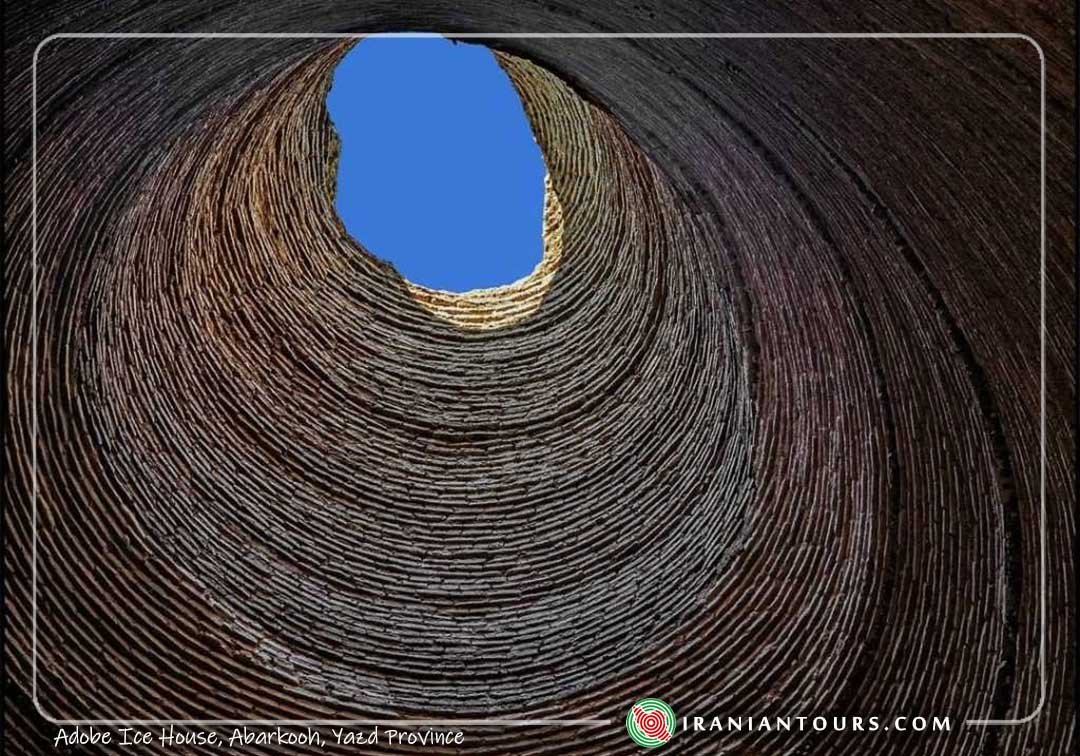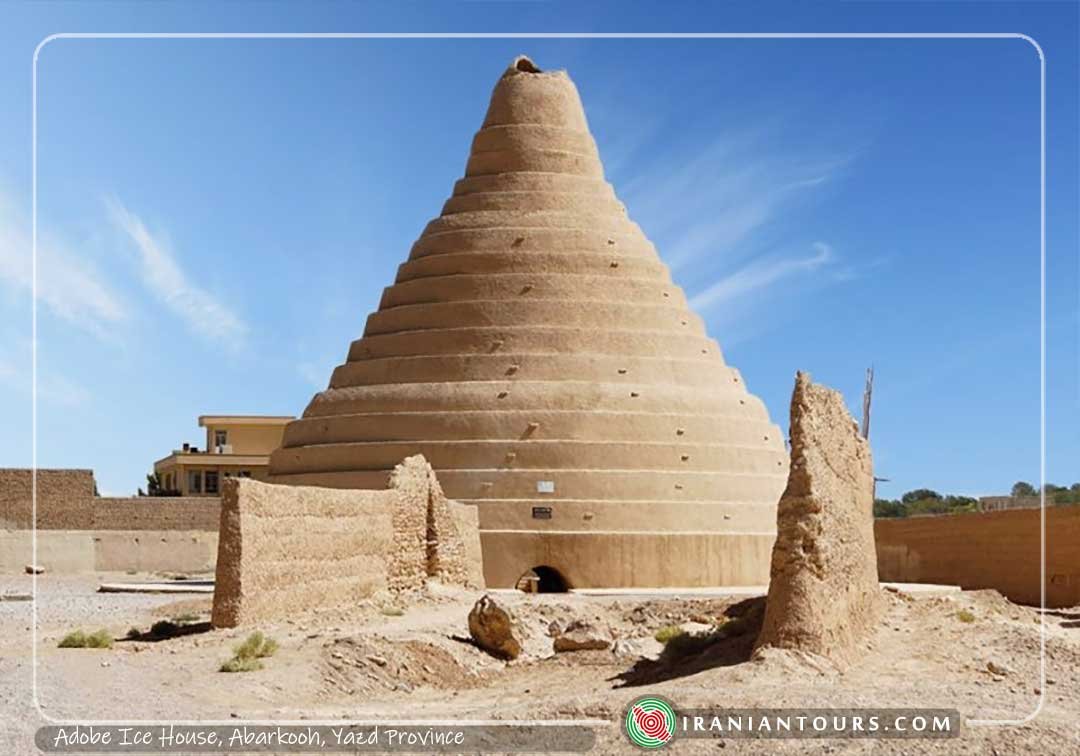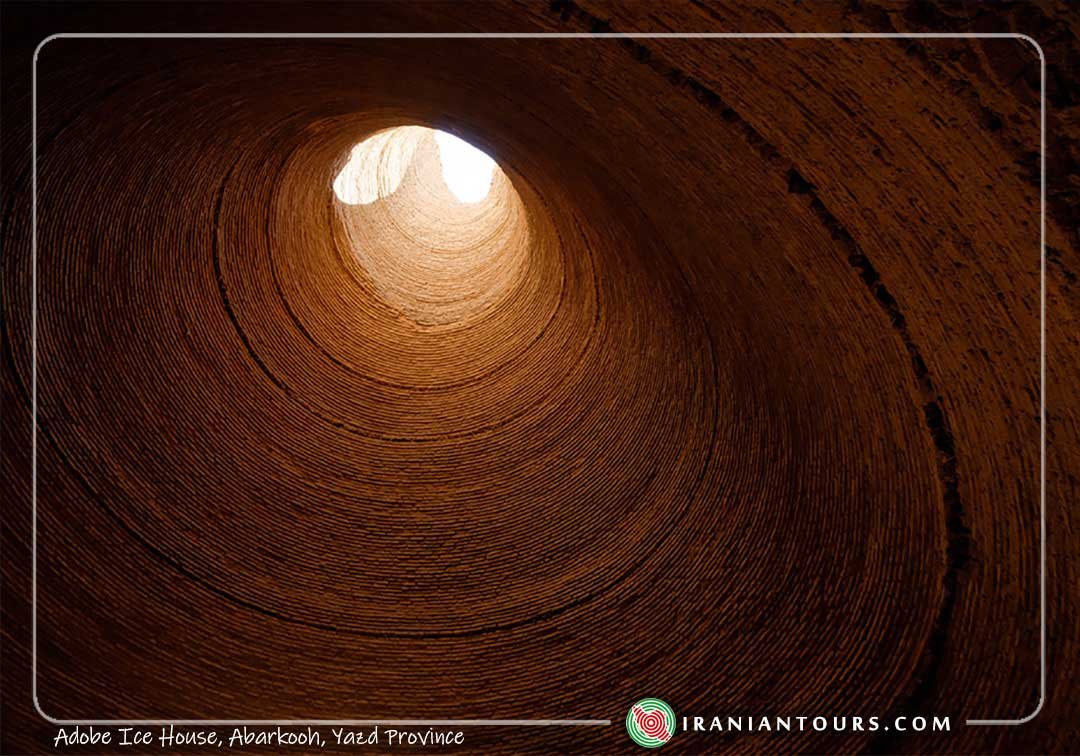Adobe Ice House
The ice houses (Yakhchal) are ancient buildings made of adobe and mud that were used to store ice and food throughout the year, commonly used prior to the invention of the refrigerator.
Abarkooh is home to four adobe ice houses that date back to the Qajar dynasty. They’ve been hanging around since the Qajar Dynasty and as some even speculate, perhaps the Safavid Era. The earliest ice houses date back to around 400 BC.
The style and architecture of these yakhchals have all been relatively similar throughout the years. Although many have been replaced with the less expensive and more convenient refrigerators of today, some of them have been able to withstand the test of time, desert storms and industrialism.
Built in a stepped-cone shape, to some first-time visitors and tourists it may resemble some sort of ancient temple. To others, approaching from even farther away, perhaps even a landed UFO.
Of course, there is a method to the madness of the antiquated architects’ design! These ice houses are built with a default structure consisting of four main parts. The freezing pool, shadow-casting walls, ice storage and, of course, the conical dome.
Perhaps even more peculiar than its shape are the ingredients used to make it. If you even want to build a yakhchal of your own, you’ll need sand, clay, adobe, lime, egg whites, ashes and goat hair and not in that order!
Once you’ve combined the right ratio of all of those ingredients, you will end up with an ancient desert mortar called sarooj. Sarooj is water-resistant and, as you may have already guessed, a great insulator. The dome and its lower structure were built in layers from this special material.
Ironically, these desert ice houses share a bit of an interesting similarity to icebergs. Just as the Ice House of Abarkooh stands 12 meters tall, the structure also extends underground the same amount or even more.
The yakhchals utilized the water channelled from nearby mountains via the ancient qanat system. During the colder winter season, the water would be directed into big shallow pools behind the north-facing shadow-walls.
The tall walls would cast a shadow on the very wide half-meter-deep pools during the day, allowing the water to stay cool.
Once the desert night arrived, the water would freeze and then be broken up and taken into the dome structure, where they would be kept in the ice storage underground. A layer of straw was placed between the slabs of stored ice in order to keep them from sticking to one another.
Although the yakhchal would keep the ice frozen from winter all throughout the summer months, there was also a special system built-in to collect and refreeze the drippings!
A spiral water system was also built into the walls of the ice house; working with the carefully placed vents they maintained the cool environment.
Food is a very important part of Persian culture and in being so, its preservation is just as important as it presents. The ancient refrigerators did just that.
Thick and big slabs of ice were carried to various food and dessert vendors by donkeys during the hot summer months. Also, although these ice houses were mainly meant for storing ice, they were also occasionally used to store food as well.
When you’re enjoying your cool cup of heavenly faloodeh, just remember the hoops the previous generations had to jump through to get that very same treat!





